Metal fabrication software is a technological tool that assists metal fabricators with manufacturing and management processes.
Companies use it to control, track, and manage their fabrication projects, from designing and planning to actual production and post-production phases like delivery and installation.
This software can help streamline operations, improve accuracy, and boost productivity, enabling fabricators to grow in a controlled way. For sales and growth-focused fabricators, read our proven marketing tactics for metal shops.
Navigating the myriad of metal fabrication software options can be a daunting task. These sophisticated digital tools are designed to streamline operations, enhance accuracy, and ultimately increase productivity in the metal fabrication industry.
This article will guide you through the top-rated software in this field, highlighting their key features, benefits, and how they could potentially revolutionize your business operations.
Whatever the solution, the main reason for using metal fabrication software is to gain control over the manufacturing process so you can grow it in a controlled way.
It will provide an overview of what is going on from a planning point of view.
However, the elements making the software beneficial are the same ones that make it complex and daunting to implement in your company. Changing things that you have used for years for something new requires much trust in a fabrication software solution.
With this article, we aim to give you some guidelines on what to consider and how to evaluate different solutions so this process will be as smooth as possible.
1. Eziil
Eziil is a state-of-the-art metal fabrication software designed to give you a real-time overview of the manufacturing process.
It aims to improve manufacturing processes
efficiency, accuracy, and productivity.
It has advanced solutions for all primary metal fabrication processes like project management, bill of materials, bill of operations, drawing management, procurement, warehousing, planning, reporting, delivery, invoicing, etc.
This feature gives complete control over all departments in your production, giving employees total transparency over what they must accomplish.
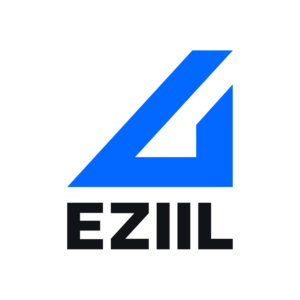
The software's pros:
- Focus only on project-based metal fabricators
- Very intuitive and easy-to-use bill of material solution
- Simplifying complex tasks into smaller implementable steps
- Providing project cost analysis (plan vs. reality)
- Tracking production stages, material usage, and factory capacity planning
- User-friendly interface and integration with existing systems
- MobilE solution for shop floor reporting and ability to view drawings
The software's cons:
- Cloud solutions don’t work without internet access
- Needs o be set up and customized to your needs by Eziil implementation service
Despite these minor reservations, Eziil remains a highly beneficial tool for fabrication businesses seeking to optimise their manufacturing process through digitization.
Because they deliver implementation service, they walk through the process with you step-by-step.
This method helps them consider feedback, so the solution keeps improving over time, making it an excellent choice for fabricators since they are still determining the future.
It’s preferable to be in a system growing over time instead of being stuck in a fixed system.
2. Strumis
Strumis is a fabrication management software catering to the needs of steel fabrication industries and construction sectors.
It’s designed to streamline the steel fabrication process from initial bid to project completion by reducing manual data entry and potential errors, ensuring accurate cost calculations, and time management.
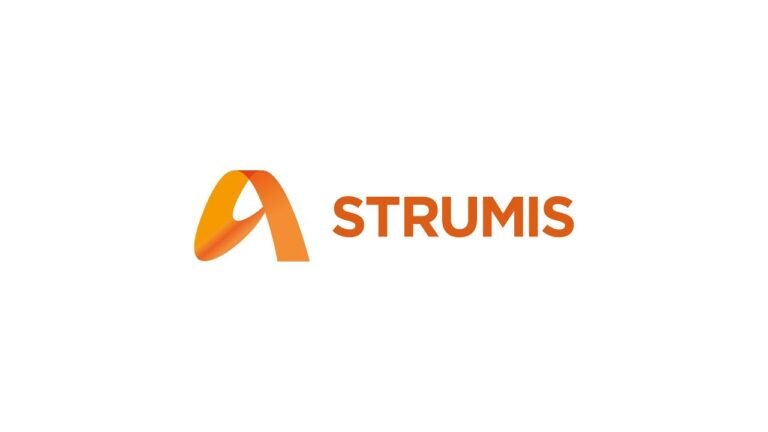
The software's pros:
- Real-time tracking of parts for total traceability
- Integration with BIM modeling software
- Reducing material waste with planning and nesting functions
- Improving productivity through automation
- Cost control of manufacturing projects
The software's cons:
- The software’s complexity can challenge first-time users
- The initial setup can take a lot of time and effort before getting results
- A high-end solution that may not be cost-effective for smaller fabrication companies that do different types of projects
- On-premises solutions need to upgrade to a new version over time
- Legacy software has been long in the market
Overall, Strumis is a robust tool that can drive efficiency gains in steel fabrication when adequately implemented.
Implementation is complex and requires a steep learning curve, adding risk for the fabricator since the initial investment is significant.
The time needed for a fully operational system with trained team members is substantial.
The easier the production process is, from a product point of view, the easier it is to implement Strumis into the workflow.
3. Tekla PowerFab
Tekla PowerFab is an all-inclusive steel fabrication management software.
It’s a tool designed to streamline operations, ensuring optimal efficiency and productivity in the steel fabrication process.
The EPM software offers real-time information and visualisations for inventory control, purchasing, production, and project management.

The software's pros:
- Comprehensive: Consolidates multiple processes into one platform
- Good fit for fabricators who also offer design work and make it in Tekla so they can streamline information to execution to Tekla Power Fab
- Real-Time Visibility: Offers up-to-date information for better decision-making
- Integration: Interfaces seamlessly with other Tekla and Trimble solutions
The software's cons:
- Learning Curve: It may require time for users to become proficient
- Requires engineering drawings and sources other than Tekla
- Cost: The software can be expensive for small businesses, given its extensive features
In short, Tekla PowerFab is an effective tool for steel manufacturers, offering a high degree of control and visibility over the fabrication process.
Especially good for fabricators who design projects themself in Tekla, so it’s a logical following piece in the workflow.
However, its extensive features may pose a learning challenge.
4. Construsteel
Construsteel metal fabrication software is a comprehensive solution designed to streamline the metal fabrication process.
The software has powerful features that enable users to create, prototype, and produce high-quality metal parts with precision and efficiency.
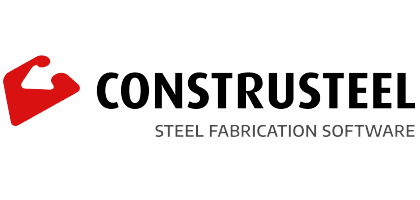
The software's pros:
- Ability to integrate with different machinery seamlessly, increasing productivity and reducing manual work
- Intuitive interface and robust simulation capabilities
- The software supports various file formats, enhancing its compatibility with other design tools
The software's cons:
- Requires a steep learning curve for those unfamiliar with CAD software
- High costs can be a barrier for small businesses
- The response times for customer support need to be improved
Despite these drawbacks, Contrusteel is a good potential choice for metal fabrication software.
At the same time, it could be hard to implement because there is little information available on usage, and the user base is lower, so the probability that someone in your team is already using it is low.
This lack of experience creates an implementation bottleneck, preventing the user from getting the maximum from the system.
5. SysPro
SysPro metal fabrication software is a comprehensive solution designed to meet the unique needs of the metal fabrication industry.
It offers an integrated approach to managing and controlling all aspects of the fabrication process, from the initial design stages to the final production.
SysPro streamlines operations, enhances productivity and increases cost efficiency.
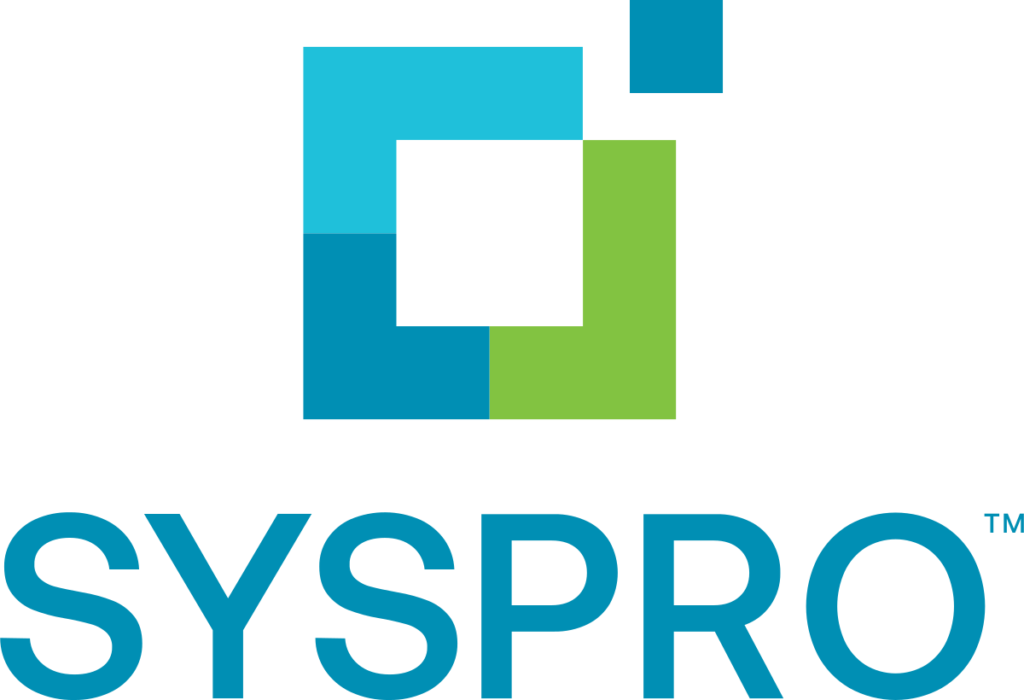
The software's pros:
- Accurately tracks inventory
- Effective cost control and waste reduction
- Offers real-time visibility into operations, aiding timely decision-making
- Supports seamless integration with other business systems, increasing operational efficiency
The software's cons:
- It is complex for new users
- Servicing a wide range of industries but not focused on fabrication
- Initial setup and integration are time-consuming and may require specialised training
Despite these limitations, SysPro is a versatile tool that can significantly enhance productivity in metal fabrication.
The critical factor is implementing and evaluating the natural fit with your current workflow processes.
6. Fabtrol
FabTrol Systems has been a global leader in steel fabrication management solutions, offering robust metal fabrication software.
FabTrol is designed to streamline operations, boost productivity, and enhance the accuracy of steel fabricators.
It excels at automating estimating, material management, and production tasks, leading to increased efficiency.
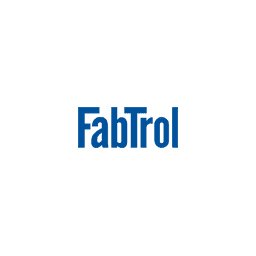
The software's pros:
- Good estimating functionality
- It has been in the market a long time and is widely used
- Clear workflow for a steel fabricator
- Comprehensive reporting capabilities
- Integration with popular CAD solutions, making it an all-in-one solution for metal fabrication management
The software's cons:
- The cost might be a barrier for small businesses
- System user interface is not very modern
- Works only as an on-premises solution
- Official customer service is not available anymore
FabTrol is a software solution with an excellent worldwide base of users, but it’s decreasing all the time because there is no official support for the software.
Existing users can continue to use it for now but eventually must upgrade to more modern supported solutions.
For insights on FabTrol, its essential features, and the risks of its discontinuation, see our article: “FabTrol MRP Discontinued In 2023“. It guides you through the process of evaluating new MRP solutions, ultimately leading to our recommendation for an effective FabTrol alternative.
What is Metal Fabrication Software?
The various features of metal fabrication software can include CAD/CAM capabilities, job tracking, material and inventory management, and cost estimation. By integrating all these functionalities, the software enables businesses to have a comprehensive, real-time view of their operations.
It can automate repetitive tasks, reduce human error, and allow quicker decision-making. It is a critical tool for businesses hoping to remain competitive in the ever-changing metal fabrication industry.
Success comes from the proper implementation because the system must fit into the fabricator’s business process so everybody in the company will use it in their work. Appropriate implementation creates a straightforward process and transparency, allowing information to flow quickly without delays and mistakes.
What are the Types of Metal Fabrication Software?
Metal fabrication software has two main types, depending on their designated functions.
Material Requirements Planning (MRP) is a supply planning system that helps manufacturers comprehend their inventory requirements while balancing supply and demand.
It features real-time purchase management, work planning and progress, and project margins.
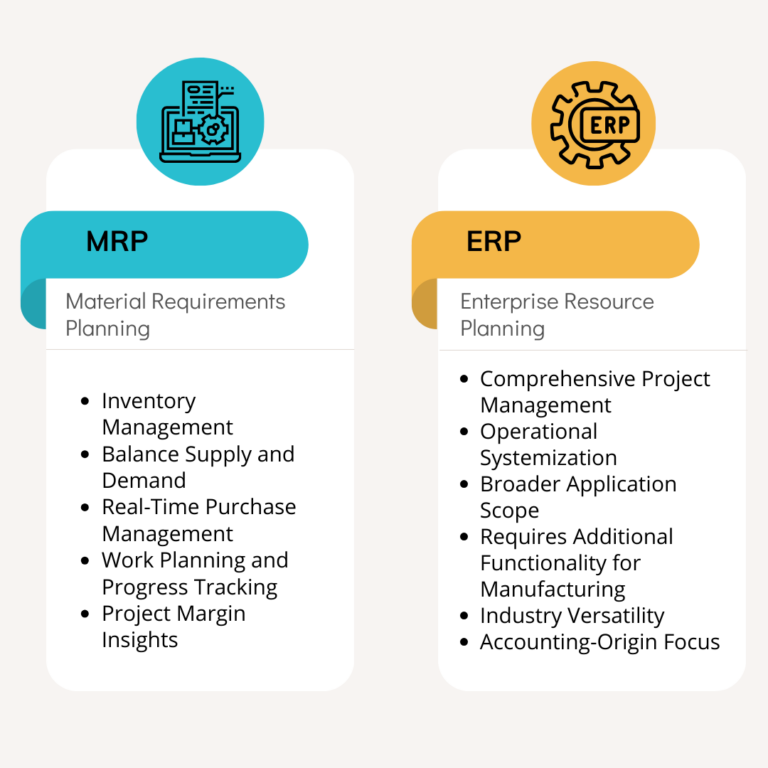
Enterprise Resource Planning (ERP) software manages projects, enabling companies to systemize operations in a broader scope, allowing usage in every department.
Still, it typically needs more functionality since ERP is a more generic solution.
When using ERP, there is probably a point where production needs it and an MES solution to arrange workflow at shop floor level. These lean management techniques complement MES by reducing setup times and eliminating idle periods.
ERP is usually designed to fit different industries and originates more from an accounting point of view than production. That makes the system more generic.
Other manufacturing software includes computer-aided design (CAD) for generating part designs and computer-aided manufacturing (CAM) software programs for machining parts, components, and products.
Also, nesting software analyses the parts to be machined and determines how to lay out these parts on a sheet, plate, or tube to use the material efficiently.
Usually, CAD systems are integrated with MRP or ERP to streamline workflow. Nesting solutions can vary depending on the machines used or production type but are also usually not inside MRP or ERP systems.
Who Uses Metal Fabrication Software?
From sales to shop floor workers, everyone in the company uses metal fabrication software, streamlining processes and enhancing project efficiency.
Many professionals leverage metal fabrication software as an essential tool in the manufacturing sector.
Its primary users in the company are sales, estimators, project managers, designers/draftspersons, procurers, production managers and planners, formans, and shop floor workers.
Everybody in the company is included in the process because they need essential information about the projects or updated based on the role actions they did in the work process.
The software solutions’ main focus is to systemize all the information used in the fabrication process and then streamline this from person to person to avoid double entries and mistakes.
By everybody doing what needed to be done, everybody in the team can see the current status and make decisions based on real-time information.
This enhances productivity because people don’t have to waste time looking for information and constant firefighting because they know what is going on and what needs attention right now.
Book a 60-minute demo to see
how eziil mrp solution works for you
How Much Does Manufacturing Software Cost?
Investing in metal fabrication software can entail varying costs due to multiple factors, such as the size of the operation (number of people, factories, etc.), the features required, whether the software is on-premise or cloud-based, and service fees like analyzing, implementation, and integration.
Usually, most cloud-based software does not offer implementation support because they focus on driving the service costs as low as possible.
That puts a lot of responsibility on the end-user to get the solution up and working.
The cloud-based version is usually priced by user number and based on the function used at the company level.
Sometimes, there might be additional costs for the volume of transactions per month or year and other fees for special functions.
Usually, cloud solutions try to keep pricing as simple as possible because they offer self-service, off-the-shelf solutions and want to avoid dealing with customers directly. This approach explains why prices per user can range from $49 to $350 monthly.
You need to know that the price will be multiplied by the number of users, so consider how many users you would have working in the system before deciding.
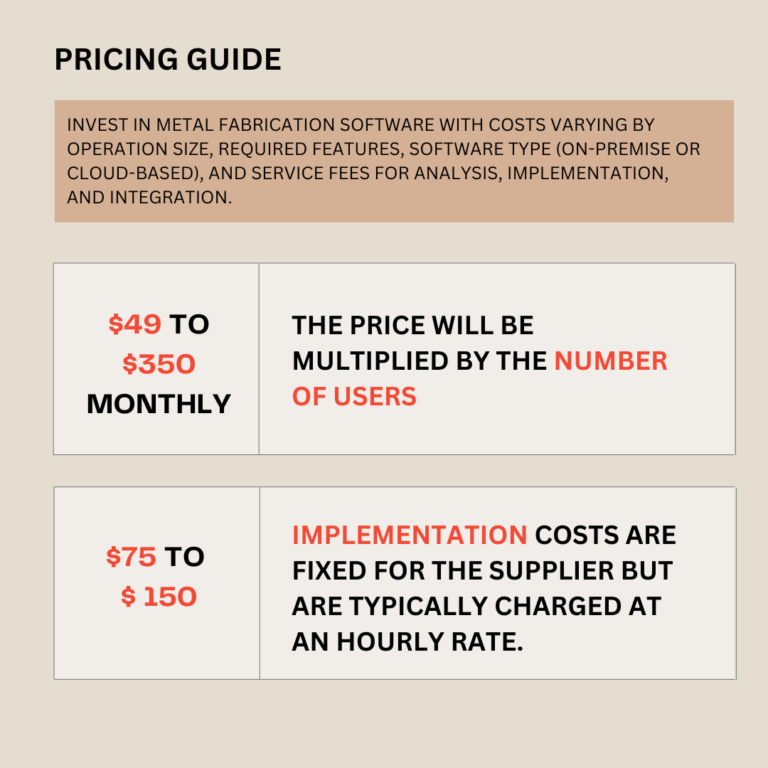
Purchasing the licensed on-site software can cost between $10,000 to $100,000, depending on the functions and number of users. Whatever your organization’s size, it usually feels like a lot of money and risk. The most considerable risk is investing upfront for license fees without knowing if this system will work for you. By making such a significant investment, you are stuck with a solution, forcing you to get it up and running or lose it.
This strategy also has perks because it pushes you to change instead of not being committed. It all depends on how you like to operate, but from an investment perspective, on-cloud monthly rental fee solutions are a much better choice. You can keep the first investment low, gain experience over time, and cancel the contract if this solution or approach is not working for you. This choice allows you to change course by returning to the former method or finding the system that suits you better.
Usually, the software is licensed “as-is,” meaning you are buying a current version. Today, the world moves faster and faster, and systems are outdated within 5 to 7 years. Then you need to buy a new license to replace the old one. Using the old version and then renewing to the latest version could feel like upgrading from a phone with buttons to a smartphone because so much has changed over time. Some fabrication software providers offer the possibility to receive updates by paying a fixed yearly upgrade fee for a percentage of your license value, varying from 10 to 25%.
Still, there is a risk because you need to make this upgrade systematically. After all, licensed solutions are in your server and need additional work. Conversely, cloud solutions fix this problem in the monthly fee. Every time there is an update, you will receive it, allowing change to be gradual and feeling more like an evolution than a revolution.
Implementation prices are concrete for the supplier but are usually done at an hourly rate of $75 to $ 150. The rate depends on the implementer’s seniority level and whether the system is more general (cheaper rates) or industry-specific (higher rates).
Experts cost more money, but having a consultant from the same industry can make 5-10 times the difference compared to someone you need to train to understand your industry. Experience is similar to onboarding a new worker: Do you hire someone who has done this job and can pick up the duties quickly, or do you take a person you need to teach about your industry nuances?
Even if they have worked before, used e-mails, made Excels, and arranged meetings, there is still much to cover to understand how steel fabrication works.
Ultimately, a cheaper implementation rate can result in longer project execution time, raise the risk of failure, and result in a higher total price.
So, valuing the background of the implementers is a necessary part of implementation cost. Cost is also affected by how many people you have in the company who need to be trained and new processes implemented.
If you need transparent, repeatable written processes, it will take additional time to work it out and align everybody to understand it the same way. Time usually means money, so implementation fees are higher.
The price varies a lot based on your company size, who is the vendor, and whether you also need implementation services or not.
How Do You Select Metal Fabrication Software?
Choosing the right metal fabrication software is a critical decision that can significantly influence the efficiency and profitability of your operations.
This powerful tool can streamline your processes, minimize waste, boost productivity, and ultimately enhance your bottom line.
However, with many available options, it’s vital to understand your unique requirements and select a solution that best aligns with your business objectives.
Here are tips to help you with the software selection process:
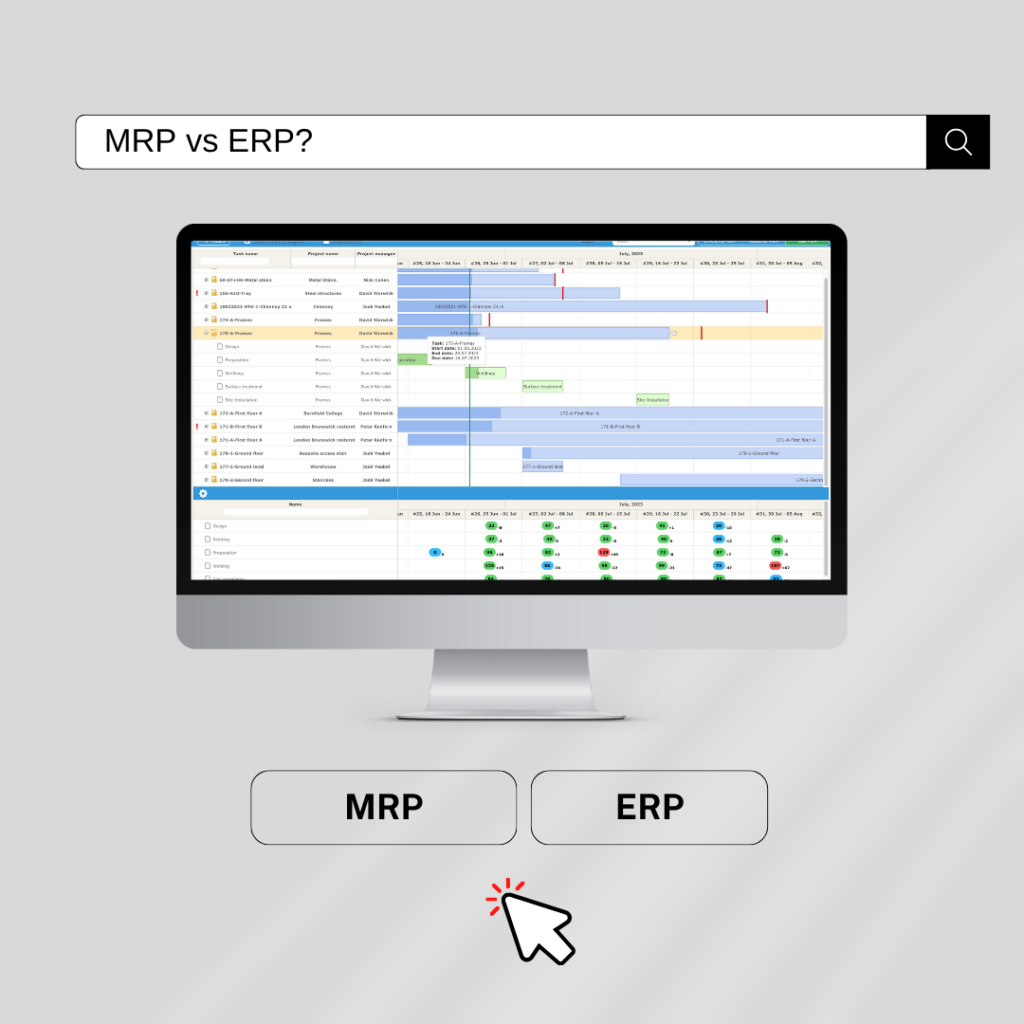
Identifying the Problem You are Solving with Fabrication Software
Fabrication software has revolutionized the manufacturing industry by addressing some of its most challenging issues.
One such problem is the inefficient use of resources, including materials, time, and labour. Outdated manual processes often result in material wastage due to lack of planning, mistakes in interpreting the information, or a lousy overview of what is happening. They also consume more time and human resources, increasing production costs and pushing people into firefighting mode where one problem chases another.
As a result, there needs to be more time, and everything should have been done yesterday.
Fabrication software solves this problem by providing precise workflow and systematic planning, ensuring optimal use of materials, and setting clear and understandable workflow to save time and reduce labour.
Another critical problem in the manufacturing industry is seamless collaboration and communication among various stakeholders. Traditional methods made it challenging because the information is usually in people’s heads or scattered in mailboxes or different Excels. Getting needed information for planning and decision-making takes time, resulting in delayed production schedules and frequent mistakes. Fabrication software significantly reduces that risk.
The software allows for real-time collaboration between all the critical stakeholders working together on the project at different stages, ensuring everyone is on the same page.
You might already know which issue is plaguing your organization, but it can be tricky to identify them while constantly working in firefighting mode inside the business. Sometimes, it will help to bring in a partner to help you identify the problem and put you on the right path of determining the right solutions.
Either way, involving the company’s stakeholders (project managers, estimators, draftspersons, production, etc.) in the identification and decision-making processes is essential. Challenges grow as you move into more extensive jobs with higher tonnage, have to divide work into deliverable lots and run multiple projects simultaneously, have extended lead times (needing to see long periods ahead of time), and have different people responsible for other departments.
Complexity arises even when this department’s work is divided between different people; adding a lot of moving parts and staying up to date with everything that is going on is very time-consuming and has a lot of potential risks.
An excellent indicator of your current process health is looking at your meetings.
Do you spend 90% of the meeting time to understand where everybody is standing (what the progress state), or is it done beforehand, and 90% of the meeting time goes into finding solutions on projects that are not progressing as needed?
This shows how good the communication line is.
Suppose you have a lot of firefighting and, most of the time, understand the status of your fabrication project. In that case, this is the point where you need to start looking for fabrication solutions, which is why you are reading this article. This is just one example. Many other things probably need to be fixed, and why you are looking for a solution.
The best way is to notice these things and write them down. You can search for the root causes or use this list to validate your vendor. When meeting with vendors, present your concerns and consider what they propose as a solution. If this sounds logical, you know you are speaking with an expert. If it’s just blur and fog, then you can be clear that this vendor is not for you.
But to do this, you need to be clear about what you want to solve, so start noticing what is going on in your fabrication process that you feel is not working and don’t like.
Determining Vendor's Previous Experience with Metal Fabrication Software
Change management is required for implementing metal fabrication software. It requires a very organized approach to transform individuals, teams, and organization processes from the current to the new way of working. At the same time as you do this, you can’t stop your production, so this must happen when you do what you do: deliver fabrication projects to your customers on time!
Making it successful requires careful planning and sensitivity to employee concerns, as new software can lead to shifts in job roles because it’s stressful to learn something new while you have to hold up the old. This is why you get resistance when changing processes and the ways people have used to work.
Successful change management will consider all this as best possible, and the expert mentioned above implementers from the vendor side would feel like day vs. night from experience and results. Planning this journey requires skill in the industry, empathy for people’s concerns, a systematic way of doing things, a persistent approach, and good-fit software to do that. All these elements are possible only to achieve through earlier experience.
This will ensure that employees understand the benefits of working with fabrication software in a new way and begin to believe in the potential for improvements in efficiency, accuracy, and product quality in metal fabrication processes. It also involves providing adequate training and support to help employees adapt to the new system, minimizing disruption, and ensuring a smooth transition.
Your team’s earlier experience with software also plays a crucial role. Familiarity with software interfaces, features, and functionalities can significantly reduce the learning curve associated with new software, enhancing productivity from the get-go. Furthermore, earlier experience in implementing software enables us to evaluate the priorities. That promotes better cooperation by setting priorities and not overloading with requests and actions that are needed in the future, not right now.
Equally important is considering compatibility with existing systems or systems you plan to implement. Vendor experience working in that industry with similar projects should be seriously considered when deciding whom to partner with before buying the software.
General vs. Industry-Specific Solutions
Industry-specific fabrication software solutions offer significant benefits over generic alternatives, particularly regarding how easy they are to implement and work in the same philosophy as your current workflow.
ERP is not a good production fit because it’s a general solution. The industry-specific software solutions are tailored to meet the unique needs and challenges of the industry.
For example, if you are an EX3 producer, you need to track the material certificates of people who fabricated specific beams and know what wire welder is used. This particular requirement can be understood and provided only by someone who knows that industry. This advantage allows for streamlined operations, fewer errors, and enhanced quality, increasing productivity and profitability.
Another advantage is the level of customization that an industry-specific software solution provides. Unlike generic software, companies can adapt and scale these solutions to align with the business growth, changing needs, and evolving trends in the industry. This flexibility ensures that the software remains relevant and delivers value over time, providing a better return on investment.
The disadvantage is that this fabrication solution may be less widely used because providing generic solutions enables access to broader markets, and more users are familiar with the system. More users push prices cheaper, and specific solutions can be more expensive because he knows and delivers the value for fabricators.
Also, industry-specific software solutions come with specialized support, meaning that when issues arise, the user speaks the same language as the experts, understanding the nuances of their industry and quickly resolving any problems. In contrast, generic software typically provides standard customer support, which may need more expertise to address industry-specific challenges. This superior support can result in less downtime and minimized disruption to operations, making work smoother and more manageable.
All of this goes in the same category as with implementation vendor experience.
Software Functionality
Determining the software’s functionality is where the rubber meets the road and where many software packages hit their first major roadblock. No matter how good the implementer, the software, or the plan made beforehand, there will always be bumps in the road.
If adding information is complicated, the entire implementation stage might be put on hold. Everything else can work correctly with the correct project and Bill Of Material information. This must be for fabricators to understand how projects get into MRP, ERP, or fabrication systems. This is crucial because every project is bespoke and needs to be entered into the software from zero.
If this takes less time, it takes lead time away from procurement and production and, in the end, can avoid being late with onsite delivery. This is one crucial reason why utilizing industry-specific software is essential to a smooth transition because this concern needs to be considered and solved.
It’s probably made very easy to import directly from your CAD (SolidWorks, AutoCAD) or import with the IFC model.
Most importantly, information is easily and quickly incorporated into the fabrication software, making the conversion quicker, easier, and less prone to mistakes.
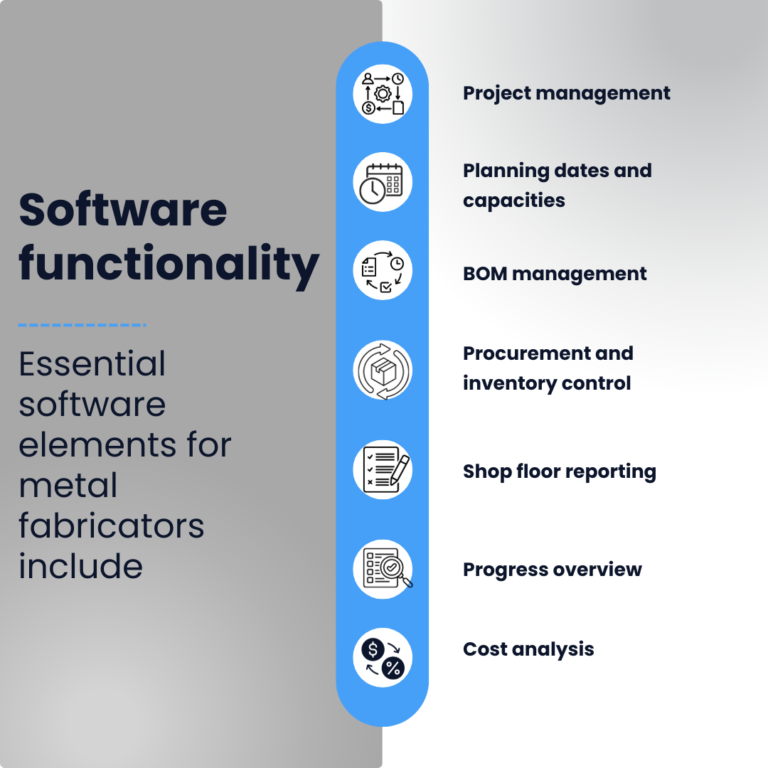
Fabricators in the metal industry should have the following elements in software, at a minimum:
- Project management: The project management feature that enables the ability to divide projects into lots/phases. It fosters improved communication among team members and customers, promoting problem-solving and timely completion of projects.
- Planning dates and capacities: Planning start and end dates based on the department with adding estimating hours will give capacity planning that all your team will understand the same way where there are bottlenecks in the process and what deadlines to promise to new projects.
- BOM management: The bill of materials is a comprehensive inventory of the raw materials, assemblies, sub-assemblies, parts, components, and quantities necessary for a project. A sound system will also be able to manage drawings and map routing (Bill of operations) so everyone can be clear about what needs to be done and how it looks. This is usually a tool for engineers or draftspersons. In some companies, this work is divided, so the production manager or planner does the operation side of things.
- Procurement and inventory control are two components of effective supply chain management. This element ensures manufacturers acquire goods and services at a fair price while maintaining optimal stock levels to meet demand. The procurement process contains a lot of manual work. Hence, the efficiency of working needs to be raised significantly, and the risk that something is forgotten is not arriving on time, so production needs to stop and replan.
- Shop floor reporting provides real-time visibility of what is going on in manufacturing processes. Can you see if the planning was correct and we are still on time? Also, this enables businesses to understand where the production bottleneck is, where estimation is accurate, what is workers’ skill level, whether we need to improve the production process, or what needs to be subcontracted to something outside. Full traceability also serves your customer who needs clear documentation on his EX2, EX3, or EX4 projects. Being precise creates trust, which will lead to new business.
- Progress overview allows every team member to know where the project is in real-time instead of where we guess it is. It should be visible in the timeline to quickly identify what is happening.
- Cost analysis for knowing what is your project profitability. This is something you can use for making decisions about where to invest. Profitability indicates the project’s profits (or lack thereof) at any point, and learning from it makes your growth.
Avoid the temptation to make it all at once with one swoop.
Like with a body, it’s impossible to get lean overnight. The same is valid with the organization.
Implementing new ways of working and getting out of old habits takes time. Trying to solve everything at once will overwhelm everybody and put everything in to stop.
Technical Considerations: on-premises (servers) vs. cloud-based solutions (SaaS)
Two main deployment types are available for fabrication software: on-premises and cloud-based.
On-premises software requires directly installing the company’s local hardware and servers. Large corporations often favor this option for its control, allowing businesses to customize the software to suit their needs and maintain data within their internal networks.
However, it does require a significant upfront investment, not only for the software but also for the hardware, setup, maintenance, and IT support. This is additional to software cost because holding it up will cost you monthly; at one point, you need to replace the server and work with backups, security, and all other technical stuff that can be overwhelming for small and medium-sized fabricators.
In contrast, cloud-based fabrication software is hosted on the provider’s servers and accessed via the Internet. This model offers numerous advantages, including scalability, ease of access from any location, and lower initial costs.
The provider typically handles updates, security, and maintenance, freeing you from internal IT resources. Cloud solutions often feature subscription-based pricing, which can be more financially manageable for many companies.
One thing to consider when choosing a system from a technical point of view is Application Programming Interfaces (API). This plays a more and more critical role today by allowing different software applications to communicate and interact with each other. They extend the functionality of existing software, allowing developers to integrate and utilize third-party services or features without needing to understand the intricate details of their implementation.
Usually, cloud-based solutions are more open for such solutions than on-premises solutions.
However, each software deployment type comes with its challenges.
On-premises software is costly to maintain and upgrade and may not offer the same accessibility or scalability as cloud-based solutions.
Meanwhile, cloud-based software relies on internet connectivity, so this option is unavailable without internet access.
Support of Software: How Much Help Will You Get?
Steel fabrication software providers should offer support options to ensure an understanding of their product.
Initially, they should provide technical support for troubleshooting any immediate issues arising during usage.
The technical team is usually within reach through phone, email, or live chat, ensuring you have a helping hand every step of the way.

Beyond the immediate technical help, look for software providers offering continuing support through training and educational resources.
These resources may include user manuals, video tutorials, webinars, or even one-on-one training sessions, all aimed at helping you understand the software’s features and how to use them effectively.
This continuous learning support is essential for mastering the software, enabling you to utilize its full potential, and ultimately enhancing your fabrication process.
People and Values Fit
Choosing a software provider that aligns with your values is essential for fostering a long-term relationship that supports business growth and sustainability.
This alignment is a foundation for trust, effective communication, and mutual understanding, vital in navigating the inevitable roadblocks in the complex landscape of technological integration.
Also, a shared set of values can facilitate smoother negotiations, project alignment, and more efficient problem-solving processes, saving both parties valuable time and resources.
In the long run, a relationship with a software provider is not a mere transactional interaction but a strategic partnership that can significantly influence your business’s trajectory.
A software provider that understands and shares your company values will likely be more committed to delivering solutions that best fit your business model and objectives.
This level of commitment can result in high-quality services, innovative solutions, and a cooperative relationship that contributes significantly to the success of your business.
In Summary
Although there are many factors to consider when selecting fabrication software, it’s crucial to avoid being overwhelmed by too many options.
Choose three to five key factors that are most relevant to your needs. These features include evaluating the software’s ease of use, functionality, and quality of customer support. Remember that the correct metal software can streamline your fabrication processes, increase efficiency, and ultimately contribute to your project’s success. Therefore, it’s worth investing time in making a well-thought-out decision, but at the same time, avoid falling into the trap of analyses paralyzes.
Suppose you are convinced that digitalization is the way to go, but you are still determining if it will bring you back your investment. Then, you are welcome to read some case studies showing what type of return other similar companies have earned from implementing fabrication software.
Sources:
https://www.tekla.com/
https://www.aveva.com/
https://construsteel.com/en/
https://eu.syspro.com/
https://www.strumis.com/
This article was informed by resources from various websites. Specific information was derived from the above-mentioned sources.
What is metal fabrication software?
It’s a production-planning and shop-floor control system built for sheet-metal and steel job shops. Unlike generic ERPs, it handles nesting, material drops, cut-lists and weld routing out-of-the-box.
Which metal fabrication software is best in 2025?
The “best” tool depends on shop size and workflow. For small-to-mid sized job shops, EZIIL Starter is the budget-friendly option that combines MES depth with an interface your team can learn fast. StruMIS and SigmaNest dominate large-enterprise installs.
How much does StruMIS cost?
StruMIS is sold per module; a typical 10-user package with nesting and inventory starts around €18 000 upfront plus annual maintenance. If you’re looking for a budget-friendly alternative, EZIIL Starter is a top pick for small to medium metal fabrication shops.
What features should metal fabrication software include?
Look for BOM import, nesting optimiser, real-time work-in-progress tracking, shop-floor terminals, scheduling Gantt, and cost analytics tied to labor and scrap.
Is MES or ERP better for metal fabrication?
An MES specialises in day-to-day production control; an ERP handles finance and purchasing. Many fabricators run a lean ERP for accounting and connect an MES like EZIIL for the shop-floor detail.
How much does metal fabrication software cost overall?
Lightweight software tools like EZIIL start at €90/month; full-featured on-prem suites can exceed €50 000 plus support. Expect ROI within 6-12 months through scrap and overtime reduction.

